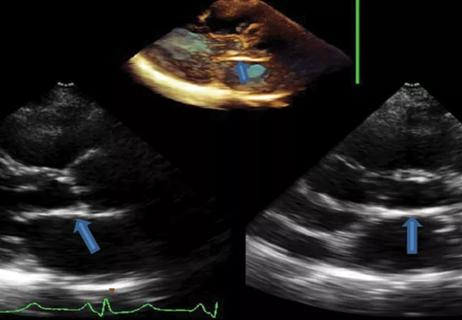ACC panel issues call to action to achieve CV health equity in an underserved population

Against the backdrop of high rates of cardiovascular disease (CVD) morbidity and mortality in Black women — out of proportion to those in women of other races/ethnicities — clinicians from the American College of Cardiology (ACC) Cardiovascular Disease in Women Committee and the ACC Health Equity Taskforce have issued a call to action to address disparities in health outcomes in this population.
Advertisement
Cleveland Clinic is a non-profit academic medical center. Advertising on our site helps support our mission. We do not endorse non-Cleveland Clinic products or services. Policy
Published as a “Review Topic of the Week” in the Journal of the American College of Cardiology (2022;80:1762-1771), the paper includes a review of the overwhelming evidence on the burden of CVD in Black women and a proposal for a patient-centered framework of solutions that involves collaboration among clinicians, healthcare systems, professional societies and government agencies
“We recognized that there are disparities in care of Black women and we wanted to highlight what is driving them,” says review co-author Deirdre Mattina, MD, a cardiologist and Medical Director of Cardio-Obstetrics at Cleveland Clinic Hillcrest Hospital. “Our report is aimed at moving beyond describing the gaps in cardiovascular care delivery in this population to closing the gaps now, because the need is urgent.”
As noted in the review, CVD is the leading cause of death in Black women, and younger Black women are two to three times more likely to die prematurely from cardiovascular causes than white women.
The review underscores the wide range of risk factors for CVD among Black women. In addition to having elevated adjusted prevalence rates of hypertension, undiagnosed diabetes, untreated dyslipidemia and obesity, Black women are significantly more likely than non-Hispanic white women to experience adverse pregnancy outcomes, such as preterm birth and pregnancy-related mortality. These risks are often compounded by racism and discrimination as well as by a higher likelihood of psychosocial stress and risks related to social determinants of health such as social isolation, lower socioeconomic status, and low-wage and/or hazardous employment.
Advertisement
To end these cardiovascular health disparities for Black women, Dr. Mattina says it is “key that clinicians focus on social determinants of health because of the role that lifestyle, ethnicity and dietary habits and physical activity are known to play in CVD prevention and management.” She and her co-authors also note that their colleagues need to acknowledge the heterogeneity of Black women and look inward to consider their own implicit biases.
“Race is based on our perception of someone’s skin color as brown versus white,” Dr. Mattina explains. “Just checking off that box in a health record may result in incorrect classification of interracial individuals, and it doesn’t take into consideration a patient’s ethnicity, ancestry, genetic admixture or the effects of socioeconomic determinants of health.”
Noting that clinicians commonly describe some patients as “noncompliant,” Dr. Mattina urges that they ask each individual about obstacles to their care and consider whether social services could help overcome them. “Maybe a patient has insurance but can’t afford prescriptions or copays, or maybe their living environment is unstable and storage of medications is problematic,” she says. “Missing or arriving late for appointments could mean a patient has transportation issues or can’t take time off from work to come to the office.”
Going beyond the level of individual clinicians, the review authors propose action items for healthcare systems and professional societies. One key recommendation is mandatory training about bias in hospitals and other practice settings.
Advertisement
“We all have our own personal implicit biases, whether related to race, body weight, geographic location or something else,” Dr. Mattina observes. “For example, non-Black physicians probably don’t quite understand how much systemic racism can affect people’s mental and physical health, regardless of their educational status.”
There are also opportunities for tailored actions at the individual health system level. For instance, at Cleveland Clinic, the support system for new mothers — including many Black mothers — now includes options for alternative care models and the involvement of key resources in, and members of, the local community. A key goal of these models is fostering better cardiovascular outcomes, explains cardiologist Chete Eze-Nliam, MD, MPH.
“Our doulas and community health workers are trained to coach women during pregnancy and the immediate postpartum period about exercise, nutrition and the importance of taking medication such as antihypertensives to prevent cardiovascular issues,” says Dr. Eze-Nliam. “We’re making it easier for patients to get care by bringing it to them in community-based clinics. We’re also extending the reach of our health education by engaging with stakeholders trusted by the women, such as local religious leaders.”
The report also calls for more representation of Black women in research and clinical trials, diversification of the cardiovascular healthcare workforce, standardized racial/ethnicity terminology, health equity guidelines for clinical practice, and team-based care that is both multidisciplinary and culturally tailored.
Advertisement
“Three decades after federal policy changes were enacted to improve clinical trial participation for women and Black Americans, the groundbreaking device and pharmaceutical trials that dictate clinical practice continue to have low rates of enrollment, frequently even for disease states that disproportionately impact these groups,” says Lee Kirksey, MD, MBA, Vice Chair of Vascular Surgery and Chief Equity and Community Engagement Officer for Cleveland Clinic’s Heart, Vascular & Thoracic Institute. “The authors of this paper have thoughtfully described a multipronged approach to address this fundamental shortcoming.”
Regarding the recommendation on workforce diversification, Dr. Mattina says: “Heart disease is the No. 1 killer of Americans, and I think we should have a workforce that reflects our population at large. We’ve made good progress in increasing the number of women in cardiology, but the specialty is not yet diverse. Cardiology practitioners of color should be mentors and sponsors of students of color.”
Dr. Kirksey adds that physician scientists from underrepresented communities are more likely to return to those communities to practice and participate in advocacy to improve social and economic policies that impact the health of vulnerable communities. “And as this outstanding manuscript demonstrates,” he notes, “they are more likely to investigate and provide solutions for complex and longstanding health problems.”
At the government level, the report’s authors call for consideration of the health impact of all policies as well as incentivizing reimbursement for equitable care of Black women. Individual clinicians have a role in making those goals a reality, according to Dr. Mattina.
Advertisement
“Clinicians don’t think about how much politics plays into how we manage and treat patients,” she says. “We each have a duty to advocate on our patients’ behalf for measures that increase access to care, such as expansion of Medicaid and coverage of postpartum care for a year after delivery. Such measures have real impacts on patients’ access to care and outcomes.”
“Healthcare is a fundamental human right,” Dr. Mattina adds, “and our mission as healthcare providers should be to provide unbiased, equitable care to all those we treat. Change is slow but necessary.”
Advertisement

A multi-pronged strategy for tackling cancer access problems

Approximately 500 million people globally are experiencing 'period poverty'

Yet 21.4% of tested individuals had Lp(a) elevation

AHA recommendations for pretransplant evaluation, peritransplant and long-term management

Phase 2 trial of zerlasiran yields first demonstration of longer effect with each dose of an siRNA

27th offering of this CME favorite to be held March 6-9 in Hollywood, Florida

Metabolites from animal product substrates implicated in heart failure development in community cohorts

Cleveland Clinic study finds that durable weight loss is key to health benefits